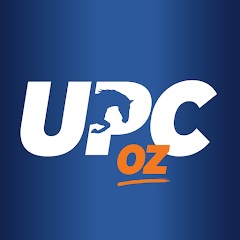Beyond Gut Feeling:
Leveraging Horse Racing Statistics for Smarter Bets
Horse racing, a sport steeped in tradition and fueled by passionate fans, often evokes images of elegant thoroughbreds and cheering crowds. But beyond the spectacle lies a world of data and statistics that can significantly enhance your betting strategy. UPC presents this guide to harnessing the power of horse racing statistics, empowering you to make informed decisions and potentially increase your winnings.
- Objective Insights
- Beyond Intuition: While intuition and “gut feeling” can play a role in horse racing betting, statistics provide objective insights into a horse’s past performance, helping you assess its potential for future success. They offer a data-driven approach to evaluating a horse’s abilities, strengths, and weaknesses, removing some of the subjectivity inherent in handicapping.
- Quantifiable Measures: Statistics provide quantifiable measures of a horse’s performance, such as speed figures, winning percentages, and earnings. These measures can be compared across different races, horses, and even time periods, allowing for a more objective assessment of a horse’s potential.
- Identifying Strengths and Weaknesses: Statistical analysis can reveal a horse’s strengths and weaknesses in various areas, such as its performance at different distances, on different track surfaces, or with different jockeys. This information can be invaluable when assessing a horse’s suitability for a particular race.
- Form Analysis: By tracking a horse’s statistical performance over time, you can identify trends in its form, such as improvement, decline, or consistency. This can help you predict its likely performance in future races and make more informed betting decisions.
- Identifying Trends
- Uncovering Patterns: Analyzing statistical data can reveal trends and patterns that might not be readily apparent by simply looking at a horse’s past performances. These trends can provide valuable insights into a horse’s potential and suitability for specific race conditions.
- Examples of Trends
- Distance Specialization: Some horses excel at specific distances, while others are more versatile. Statistical analysis can help you identify a horse’s optimal distance range and its performance at different distances.
- Track Surface Preference: Horses can have preferences for certain track surfaces, such as dirt or turf. Analyzing their performance on different surfaces can reveal their strengths and weaknesses in various conditions.
- Jockey/Trainer Combinations: Some horses perform better with specific jockeys or trainers. Statistical analysis can help you identify these successful partnerships and factor them into your betting decisions.
- Seasonal Trends: Some horses perform better at certain times of the year or in specific weather conditions. Analyzing their past performances in different seasons or weather patterns can reveal valuable insights.
- Uncovering Value
- Finding Undervalued Horses: Statistics can help you identify value bets where the odds offered by the bookmaker might not accurately reflect a horse’s true chances of winning. This often occurs when the public or the bookmakers have overlooked or underestimated certain factors.
- Examples of Value Bets:
- Improving Form: A horse that is showing signs of improvement in its recent performances, but whose odds haven’t yet caught up to its true potential.
- Favorable Matchups: A horse that has a strong record against its competitors in a particular race, but whose odds are inflated due to other factors, such as a wide draw or a less popular jockey.
- Course/Distance Specialist: A horse that excels at the specific course and distance of a race, but whose odds are longer due to a lack of recent wins or other factors.
- Calculating Expected Value: By combining your statistical analysis with your own assessment of a horse’s chances, you can calculate the expected value of a bet. If the expected value is positive, it indicates a potential value bet.
- Speed Figures
- Measuring Performance: Speed figures are numerical representations of a horse’s performance, standardized to account for variations in track conditions and race distances. This allows you to compare horses across different races and identify those who are consistently running fast times.
- Popular Figures: Some popular speed figure providers include Beyer Speed Figures, Timeform Ratings, and Racing Post Ratings.
- Interpreting the Figures: Higher speed figures generally indicate better performance, but it’s important to consider the context of the race, such as the pace and the competition.
- Winning Percentage and Strike Rate
- Overall Performance: A horse’s winning percentage and strike rate (the percentage of races in which it finishes in the top three) provide a general overview of its overall performance and consistency.
- Analyzing Trends: Track these statistics over time to identify trends in a horse’s form. Is it improving, declining, or staying relatively consistent?
- Course and Distance
- Horses for Courses: Some horses have a strong affinity for certain tracks or distances, while others struggle. Analyze a horse’s record at the specific course and distance of the race you’re considering.
- Track Bias: Consider any track biases that might favor certain running styles or draw positions.
- Distance Suitability: Horses have different optimal distances. Sprinters excel in short races, while stayers are better suited for longer distances.
- Jockey and Trainer Stats
- The Human Element: The jockey and trainer play crucial roles in a horse’s performance. Analyze their statistics, including winning percentages, strike rates in specific race types, and recent form.
- Jockey-Horse Combination: Consider the jockey’s experience with the specific horse. Some jockeys have a strong rapport with certain horses, leading to better performance.
- Class and Form
- Class Levels: Horse races are categorized into different class levels, with higher classes representing tougher competition. Analyze the class of races the horse has been competing in and its performance at each level.
- Form Cycles: Horses go through form cycles, with periods of peak performance and periods of decline. Analyze the horse’s recent form in the context of its overall class and career trajectory.
- Identifying Value Bets: Compare your own assessment of a horse’s chances with the odds offered by the bookmaker. If you believe a horse is undervalued based on your statistical analysis, it might represent a value bet.
- Developing Betting Systems: Use statistical data to develop or refine your betting systems. This might involve creating your own algorithms or using statistical software to identify profitable betting opportunities.
- Incorporating Expert Opinions: Combine your statistical analysis with insights from expert handicappers and analysts. This can provide a more comprehensive view of a horse’s potential.
- Monitoring Trends: Track statistical trends over time to identify horses that are improving, declining, or maintaining consistent form.

When it comes to online horse racing betting in Australia, several betting platforms stand out due to their reputation, user experience, and range of offerings. Here are a few popular options:

TAB (Totalisator Agency Board)
TAB is one of the oldest and most trusted names in Australian horse racing. Its online platform provides users with access to live race streaming, comprehensive form guides, and a variety of betting options. Whether you’re betting on local or international races, TAB offers an intuitive experience that caters to both novice and seasoned punters.

UPCOZ
UPCOZ is known as the Ultimate Punters Challenge, offering a variety of horse racing betting options and flexible odds. Its platform provides live race updates, form analysis, making it popular among horse racing enthusiasts. A well-managed team is always listening to feedback, ensuring UPCOZ remains a top choice for punters.

Sportsbet
Sportsbet has gained immense popularity due to its wide variety of betting markets and promotions. Their online horse racing betting section provides live race updates, form analysis, and competitive odds, making it a go-to platform for horse racing enthusiasts. Sportsbet’s mobile app also allows users to place bets on the go, adding to its appeal.

UPC Showdown
UPC Showdown is a new, more responsible way to bet on horse racing and sports. Enter Showdowns to compete for pots that go off, pick the winners of each leg, and earn points for every correct selection. With simple betting options and a real-time leaderboard, you’ll play against other punters for top prizes. It’s horse racing or AFL/NRL Pick’em, with a fresh, engaging experience—while keeping responsible play at the forefront.

Bet365
Bet365 is globally renowned for its comprehensive sports betting platform, and horse racing is no exception. With live streaming of races, real-time odds, and a wealth of betting options, Bet365 caters to both casual bettors and high-rollers. It also provides detailed race statistics, helping users make informed betting decisions.

Ladbrokes
Known for its user-friendly interface and innovative features, Ladbrokes is another leading player in the Australian horse racing scene. Their horse racing online platform offers detailed information on upcoming races, betting odds, and exclusive promotions like “Odds Boost” to enhance the betting experience.
These betting platforms offer excellent customer support, multiple deposit and withdrawal methods, and safe betting environments, making them reliable options for those interested in online horse racing betting Australia.

Owning a racehorse can be a rewarding journey, offering a sense of pride and a unique connection to the racing community. There’s the satisfaction of watching your horse compete, the camaraderie shared with fellow owners, and the anticipation of each event. Whether you’re celebrating a strong finish or simply appreciating the dedication it takes to prepare a horse for the track, the experience can be truly memorable.
On the other hand, horse ownership comes with challenges that can dampen the enthusiasm. Unexpected setbacks like injuries or training delays, along with the ongoing costs of care, require patience and resilience. Even seasoned owners acknowledge that nothing is guaranteed, and success often depends on careful management and a bit of luck. Despite these hurdles, the commitment to seeing a horse reach its potential keeps many people deeply invested in ownership.
Fractional ownership offers a more accessible way to enjoy racehorse ownership without the usual financial barriers. Our bloodstock team handpick quality thoroughbreds from top sales worldwide, pairing each one with Group One-winning trainers across Australia. Each horse is split into 1,000 affordable units, ensuring both newcomers and seasoned enthusiasts can take part—without inflated markups. This model not only reduces the costs but also creates a community of owners who share in race day experiences, owners’ events, and the excitement of watching their horse compete.

miRunners opens the door to racehorse ownership at a more affordable level, making it possible for almost anyone to participate. Our bloodstock experts select top-quality thoroughbreds—yearlings and tried horses—from leading sales, pairing each one with Group One-winning trainers across Australia. Each horse is then divided into 1,000 units, eliminating excessive markups and ensuring genuine accessibility. You’ll also enjoy exclusive race day events and a warm community atmosphere, sharing the experience with fellow owners. Join miRunners to be part of a new approach that aims to make racehorse ownership a truly inclusive opportunity.
Looking for more insights, updates, and behind-the-scenes stories from our favorite bookies? These blogs covers everything from tips on picking winners and upcoming promotions to exclusive interviews with industry insiders. Dive in and explore the latest posts below!